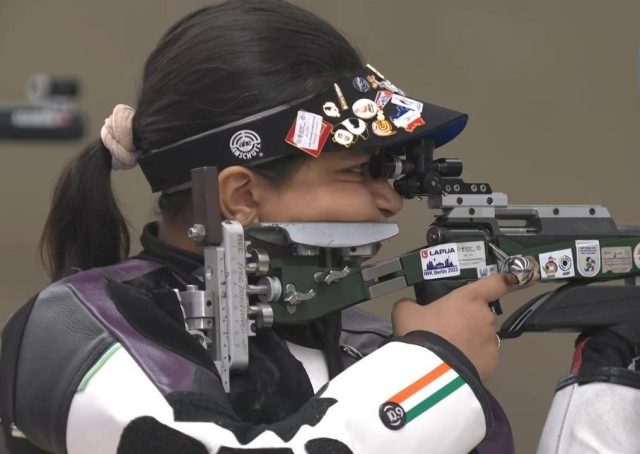There is a saying that rules are meant to be broken. But, when it comes to the Olympic Games and a lot of sporting careers are at stake, rules should be followed to the ‘T’ to ensure only the best athletes represent the country.
As India’s shooting federation, NRAI, conducts the trials to select the rifle and pistol squad for the Paris Olympic Games, the one thing that stands out is the absence of eight shooters taking aim at the target in the finals.
For anyone who follows shooting would certainly be surprised why the national shooting federation is not following the International Shooting Sports Federation’s (ISSF) norms in such a crucial exercise like the ongoing trials to select the team for the Olympic Games.
The federation has selected just five shooters to appear for the trials, while in rifle and pistol events, barring men’s 25m rapid fire pistol, eight shooters qualify for the finals.
It would be an understatement to say that the Olympic Selection Trials (OST) currently underway at the iconic Karni Singh Shooting Range in New Delhi — and another set of trials scheduled in Bhopal next month — are not being conducted as per the ISSF finals format.
The top-eight shooters qualify for the finals in rifle and pistol. The first shooter in the 10m rifle and pistol events is eliminated after the 12th shot, taking the eighth place. Then, a shooter is eliminated after every two shots till the 24th shot.
In 50m rifle three positions, which consists of 45 shots in the finals, the two lowest-ranking finalists are eliminated after 40 shots. The final continues with five single shots with the lowest-ranking athlete being eliminated after each shot until two athletes remain to fire the last shot.
In the ongoing OST, since there are only five shooters in the finals instead of the usual eight, the elimination is starting after the 18th shot in 10m air rifle and air pistol and 42nd shot in the case of the 50m rifle three positions.
This ensures everyone is safe for a longer part in the finals. Had it been a full field in the finals, the results could have been different from what they are now.
The scores from the qualification are not carried forward in the finals and everyone starts afresh without any advantage, so beating a field of eight is much tougher than five.
This will not be the case at the Paris Olympics when the top-eight shooters will battle it out in the finals for a podium finish.
According to ISSF rule No. 6.17.1.1 (Qualification for Finals), all athletes entered in an event will fire the Qualification course (Rule 3.3.5 and 3.3.6.5) to determine the finalists for that event. The eight highest-ranking athletes in the Qualification advance to the Finals, except in 25m Rapid Fire Pistol Men, the six highest-ranking athletes advance.
As per the 2016 Rio Olympic gold medallist in women’s 10m air rifle, Ginny Thrasher of the USA, the US Olympic trials were open to “as many athletes as wanted to sign up” and there was no selection, There were three sets of two qualification match days spread over six months with a full final for top-eight after every two qualification matches.
Since there are bonus points on offer for a top-three finish in the finals, the Indian shooting federation could have selected at least eight shooters in order to conduct a proper finals. There were several good shooters who were keen to participate in the trials.
Unfortunately, an opportunity has been missed to select the best squad and several aspiring athletes will miss the bus to Paris despite putting in the hard yards all these years to make it to the national squad for the Olympics.


